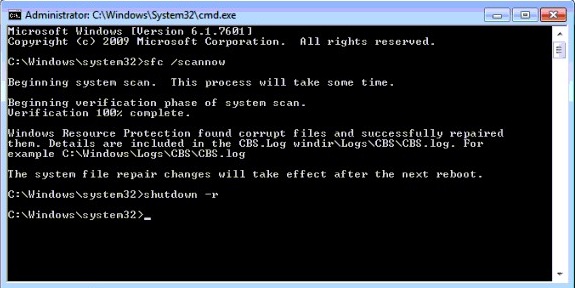Compatibility Parallels Desktop 14 for Mac is fully compatible with macOS 10.14 Mojave. Older Parallels Desktop versions* only partially support working on macOS Mojave due to technical reasons and the following issues may occur (included but not limited to): Issues allowing Parallels Desktop system extensions. No internet connection in Windows, however internet is accessible on the Mac side. Internet connection is low or unstable. Issues with network dependent software even though the internet in Windows is working fine.
Running SOLIDWORKS on a Mac People often ask if it is possible to run SOLIDWORKS on a Mac – the good news is you can. We know quite a few users running SOLIDWORKS successfully on a Mac. The bad news is that it isn't supported by SOLIDWORKS … There are no versions of SOLIDWORKS that are written for Mac OS and OS X, however there are versions of eDrawings available for Mac OS. A change in Mac OS or an upgrade to SOLIDWORKS may suddenly give you major headache. We would always recommend running SOLIDWORKS on a Windows PC.
However if you have to run SOLIDWORKS on a Mac read on:- Running SOLIDWORKS on a Mac means you are making compromises on speed, functionality and stability. SolidWorks is only supported when:-
- Running on Microsoft operating systems. With SolidWorks 2019, that means running Windows 10 or Windows 7 operating systems. However, Windows 7 will only be supported until the end of the 2020 release, so we recommend going with Windows 10. It also means you have to buy a copy of the Windows operating system.
- Running with a supported graphics card (more of this later).
The operating system on a Mac is called 'Mac OS' and there are two ways of running Windows 10 on a Mac:-
- Boot Camp
- Parallels
- Boot Camp
This is the preferred method – it effectively runs Windows on your computer instead of Mac OS. In effect, you end up with one computer with a choice of two operating systems.
When you boot up your Mac you have to choose to run either Mac OS or Windows.
Boot Camp Assistant creates a partition just for Windows, leaving your existing Mac OS volume intact.
It is free to install but you do have to buy a copy of your preferred windows operating system.
Note: It is important you only use 'boot camp assistant' to create this windows partition. See http://support.apple.com/kb/HT1461
2. Parallels
Parallels Desktop, the industry-leading software for running Windows applications on a Mac, now includes a new version of the software for developers, designers, and power users: Parallels Desktop for Mac. Parallels for mac kickass torrent kickass torrent. Come and download parallels desktop 13 absolutely for free. Fast downloads.
Parallels software can be installed on your Mac OS. It allows you to run a 'virtual' copy of a Windows operating system at the same time as running your Mac OS.
In our case, we would use Parallels to run a 'Virtual PC'. The 'Virtual PC' would then run Windows 10 on which SolidWorks can ultimately run. You need to buy Parallels and a copy of Windows 10 for this solution.
Running Parallels on a Mac is really convenient as you can seamlessly switch between Windows and Mac OS when needed.
Parallels For Mac Home
Unfortunately, it really stretches the capabilities of most machines to run both Mac OS and Windows as well as a heavy-duty program like SOLIDWORKS at the same time. It also introduces an extra level of software to 'go wrong'. Certainly running via Parallels is slower and more prone to crashing SOLIDWORKS than the Boot Camp solution.
Graphics Cards
You need to be running a supported graphics card to get the most out of SOLIDWORKS.
Only a few cards are supported by SOLIDWORKS.
NVIDIA sell a range of supported graphics cards called 'Quadro' (the exception is the Quadro NVS, which is unsupported). Most NVIDIA cards are from their GeForce range, which are not supported.
ATI sell as range of graphics cards called 'FireGL'/'FirePRO' which are supported. Most ATI cards are from their Radeon range, which are not supported.
Not many Macs come with supported graphics card. No MacBook or MacBook Pros have supported cards.
If you run via Parallels, you are running a 'virtual' graphics card driver. There is currently no way to install the correct NVIDIA Quadro or ATI Fire drivers required by SOLIDWORKS via Parallels even if you have a supported card. You have to use the generic Parallels virtual driver. The virtual driver is much slower than using the correct driver running on a normal Windows PC or laptop.
Certain workarounds do exist to allow.
Without a supported card, you won't get some feature such as the looking glass, RealView etc. to work.
Users have also reported items temporarily disappearing after you rotate/zoom/Pan e.g. Parallels virtualization sdk 14 for mac. dimension text.
Finally, without a supported card SOLIDWORKS is less stable and more prone to crashing.
If you are plagued by stability/display issues its worth running SOLIDWORKS with the option 'Software OpenGL' turned on.
Start SOLIDWORKS without any document loaded and select 'Tools, Options, System Options, Performance, use Software OpenGL'.
The option above calculates the graphics using your processor and a standard library, rather than the graphics card and graphics driver. This is slower but it can provide improve stability and a more reliable display.
If you have any more questions or would like us to spec you up a machine to run SOLIDWORKS on please refer to this guide, or contact us via one of our web forms here.
Coherence issues

Please follow the instructions from this article:
111474 Unable to switch to Coherence mode
Parallels For Mac Torrent
Video driver issue
Reinstall Parallels Tools.
In Windows press CMD (Win) + R buttons > in the appeared search bar type in devmgmt.msc > click OK, it will get you to Device Manager. Unwrap Display adapters tab and check if Parallels Display Adapter (WDDM) is present and not marked with a yellow question.
- If the adapter is not present, right click and Uninstall any other adapters in Display adapters tab. Keep only Video Controller (VGA Compatible) adapter. Then click Action at the top of Device Manager > choose Scan for hardware changes.
- If there is a question mark on Parallels Display Adapter (WDDM) adapter, right click it and choose Uninstall, then click Action at the top of Device Manager > choose Scan for hardware changes. If it did not help, check step 1.
Optimizing virtual video performance
Open the virtual machine configuration when it is in a shutdown state >Hardware >Graphics >Advanced Settings > make sure 3D acceleration option is set to DirectX 10 and Vertical synchronization is checked.
Set the amount of video memory according to the Windows applications' requirements (e.g. in case you use graphics applications which require high video memory, set in in accordance with system requirements).
Generally, 256 MB of video memory is enough. Sometimes Parallels Desktop recommends increasing it to 512 MB (for example, when Retina is enabled and there is an external monitor). You can increase video memory to 512 MB or more even if Retina and an external monitor are not in use, but this may have consequences:
- Virtual machine consumes more host RAM.
- Windows apps are smart — they adapt to a larger amount of video memory and start to load textures with higher resolution. This increases guest RAM consumption because guest DirectX keeps a copy of its resources in the RAM. Therefore, if you increase video memory you should also assign more RAM to the virtual machine.
- Mac OpenGL also keeps a copy of its resources in the host RAM.
Virtual video memory almost does not depend on the Mac video card and Mac video memory. While you're operating the virtual machine, textures and other guest video data are transmitted to the host OpenGL. OpenGL decides whether to collect this data in the host RAM or the host video memory.
Parallels Desktop for Mac is desktop virtualization software that allows Microsoft Windows, Linux and Google Chrome operating systems and applications to run on an Apple Mac computer. The software integrates the guest operating system into Mac OS X, allowing it to mimic native OS performance. Parallels for mac security between os. Parallels Toolbox for Mac and Windows 30+ tools in a lightweight, powerful, all-in-one application for Mac ® and PC. Easy to use and economical—a whole suite of tools for a fraction of the cost of individual apps, packaged in one simple interface. With Parallels Desktop, you can switch between Mac and Windows without ever needing to reboot your computer. If you have already installed Windows 10, Windows 8.1, Windows 8, or Windows 7 on your Mac using Boot Camp, you can set Parallels Desktop to run Windows from the Boot Camp Partition or import Windows and your data from Boot Camp into Parallels Desktop as a new virtual machine. Aug 17, 2006 In other words, does Windows act as a portal for the Mac OS since they are both running at the same time, and if someone were to gain control of the Windows enviroment, could the secure/senative data be obtained/compromise from within your Mac OS. Thanks for any input.
Parallels for mac network is unreachable. Mac Parallels - Bridged network. I am new to Apple and my task is to install VMs on a Mac server. I am trying to install 4 VMs and I want them to have separate IPs and be visible on the network as separate machines. What are my options? You can also select 'Shared Network' in Parallels Desktop 5/6, which effectively bridges with all. Note: when selecting this network mode Parallels Desktop is no longer responsible for network connectivity issues. Bridged network can be enabled on a particular network interface, such as Ethernet, Wi-Fi or other Mac network interfaces.
Issues with dynamic screen resolution
Please check prl_cc issue troubleshooting steps from this article
Click Start menu button >Settings >Update & security > check Windows updates' status, make sure your system is up to date.
Parallels For Mac Support
Windows applications video performance
Open the virtual machine configuration >Options >Optimization > set Performance value to Faster virtual machine and Power value to Better performance, make sure Adaptive Hypervisor is enabled.
- Go to Task Manager in Windows and Activity Monitor on the Mac and make sure there are no processing on each side which consume too much CPU (more than 80%).
